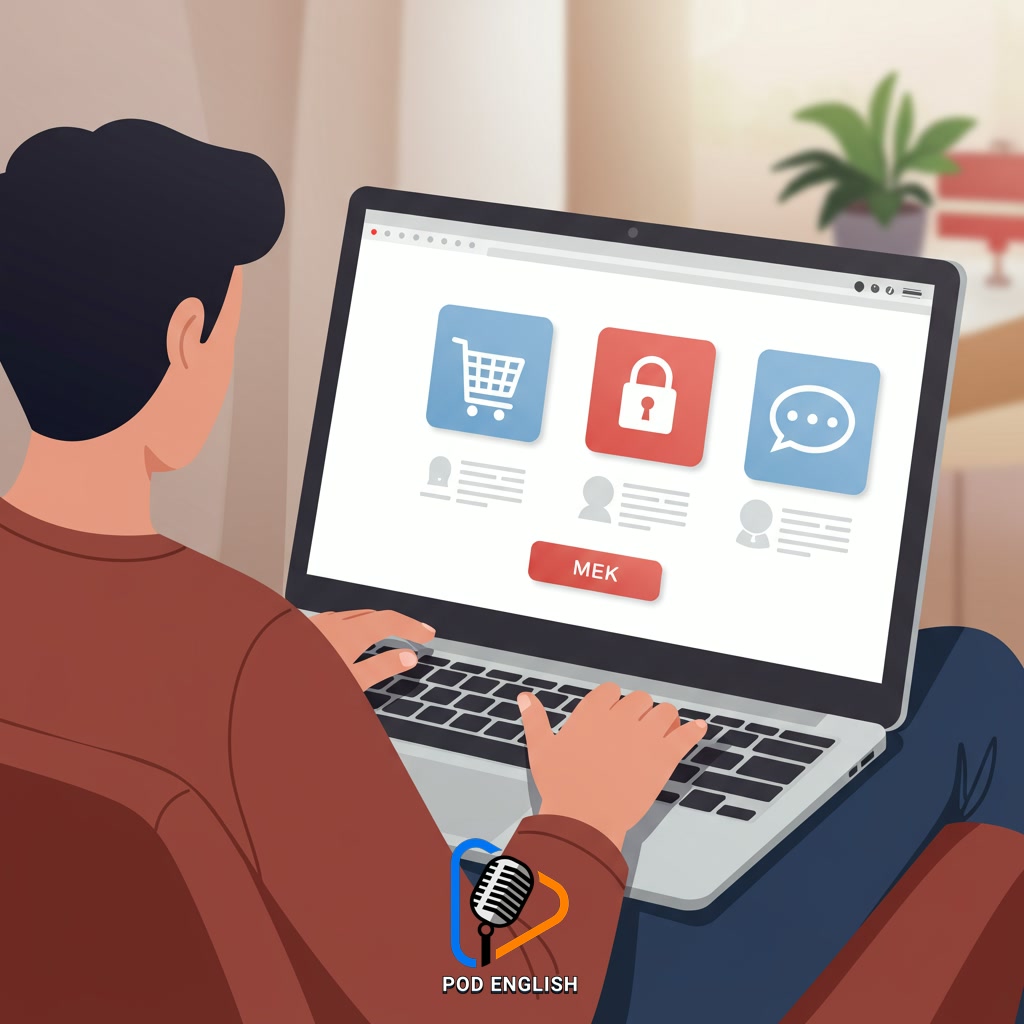Learn English
Improve Your English While Shopping Online: Practical Phrases and Tips

This content explores how to enhance your English language skills through the activity of online shopping. It offers practical phrases and useful tips specifically designed for navigating e-commerce websites and interactions. Discover how to understand product descriptions, ask questions, and complete transactions using relevant English vocabulary and expressions. Engaging with online shopping platforms provides a fun and practical way to practice and improve your English proficiency in a real-world context.
Table of Contents
- Section 1: The Unexpected English Classroom: Why Online Shopping Works
- Section 2: Essential Vocabulary for Navigating Online Stores
- Section 3: Reading Comprehension: Understanding Product Descriptions and Reviews
- Section 4: Writing Practice: Asking Questions and Leaving Feedback
- Section 5: Practical Phrases for Checkout and Customer Service
- Section 6: Tips and Strategies for Maximizing Your Learning
Section 1: The Unexpected English Classroom: Why Online Shopping Works
You might think of online shopping as just a way to buy things, but it’s actually a fantastic, unexpected place to improve your English. Every time you visit an e-commerce site, you’re reading product descriptions, comparing features, understanding shipping details, and navigating menus – all in English. This isn’t like studying from a textbook; it’s practical, real-world language used in a context you’re interested in. You encounter specific vocabulary related to products, materials, sizes, colors, payment methods, and delivery. This constant exposure and interaction with functional English helps reinforce words and phrases naturally. Because you have a clear goal (finding information about a product or making a purchase), understanding the language becomes essential and highly motivating. It’s a dynamic and engaging way to practice reading comprehension and expand your vocabulary beyond traditional learning methods, turning your screen into a personal English classroom.

The Unexpected English Classroom: Why Online Shopping Works
To effectively use online stores as a learning tool, mastering key vocabulary is essential. When you land on a website, you’ll encounter terms like ‘browse’ to look through items, or use the ‘search bar’ to find something specific. Products are usually organized into ‘categories.’ Each item has a ‘product page’ with details, often including ‘reviews’ from other buyers. When you decide to buy, you ‘add to cart.’ The process of purchasing is called ‘checkout,’ where you provide your ‘shipping address’ and ‘payment method.’ After completing the transaction, you receive an ‘order confirmation.’ Learning these terms and others like ‘account,’ ‘wishlist,’ and ‘discount’ will significantly improve your ability to navigate e-commerce sites confidently and understand the shopping process in English. Pay attention to these words as you shop; understanding them unlocks the full potential of this learning method.

Essential Vocabulary for Navigating Online Stores
Section 3: Reading Comprehension: Understanding Product Descriptions and Reviews
Moving beyond basic vocabulary, a crucial step in using online shopping to improve your English is focusing on reading comprehension. Product descriptions are rich sources of information, detailing features, specifications, materials, and benefits. Reading these carefully helps you practice understanding technical terms and descriptive language. Equally valuable are customer reviews. These provide real-world examples of English used by native and non-native speakers, often containing opinions, experiences, and practical usage notes. Learning to identify the main points in both descriptions and reviews, distinguishing facts from opinions, and understanding the context of feedback will significantly enhance your reading skills and vocabulary in a practical, engaging way.

Reading Comprehension: Understanding Product Descriptions and Reviews
Section 4: Writing Practice: Asking Questions and Leaving Feedback
Beyond reading, online shopping provides valuable opportunities for writing practice. You can actively engage with sellers and the community by asking questions about products or services. Look for ‘Contact Us’ links, chat functions, or Q&A sections on product pages. Crafting clear and concise questions helps improve your ability to communicate specific needs. Furthermore, leaving reviews and feedback after making a purchase is excellent writing practice. Describe your experience, comment on the product quality, or suggest improvements. This allows you to practice descriptive writing and expressing opinions in English, contributing to your overall fluency and confidence in written communication.

Writing Practice: Asking Questions and Leaving Feedback
Section 5: Practical Phrases for Checkout and Customer Service
After asking questions about products, the next crucial steps in online shopping involve the checkout process and potential interactions with customer service. Mastering the English phrases for these stages is highly practical. At checkout, you’ll encounter terms like “add to cart,” “proceed to checkout,” “apply discount code,” “shipping address,” “payment method,” and “place order.” Understanding these allows you to navigate the transaction confidently. Should you need assistance after placing an order, such as tracking your shipment or initiating a return, you’ll use phrases like “order status,” “request a refund,” “return policy,” or “contact customer support.” Engaging with these prompts and forms not only completes your purchase but also reinforces essential vocabulary and sentence structures related to online commerce, making your English more functional in real-world digital contexts.

Practical Phrases for Checkout and Customer Service
Section 6: Tips and Strategies for Maximizing Your Learning
Building on the phrases you’ve learned for checkout and customer service, maximizing your English learning through online shopping requires active strategies. Don’t just passively read; try to understand *why* certain phrases are used. Keep a notebook or digital file to jot down new vocabulary, idioms, or sentence structures you encounter in product descriptions, reviews, or FAQ sections. Practice saying the phrases aloud, perhaps role-playing a customer service call or describing a product to an imaginary friend. Use online dictionaries or translation tools when you’re stuck, but try to guess the meaning from context first. Revisit websites you’ve shopped on to see if you understand more each time. Engage with reviews – both reading and potentially writing simple ones yourself – to see English used in a less formal context. Remember, consistency is key; even short sessions browsing and noting new language can significantly improve your proficiency over time.

Tips and Strategies for Maximizing Your Learning













